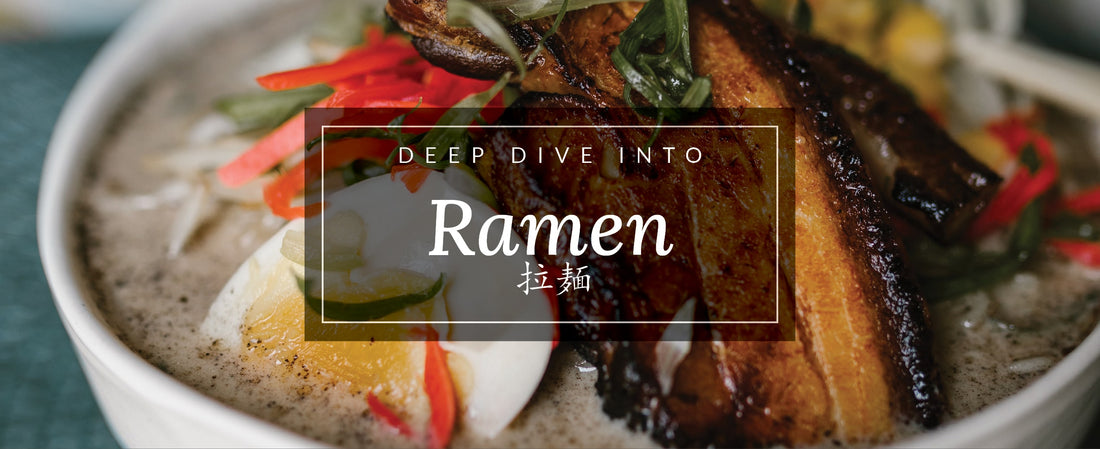By James Shi, Foodie
Ramen is one of my favourite comfort dishes. I love the chewiness of the noodles, the tenderness of the chashu, and most importantly, the rich, mouth-watering flavours of the soup.
Ramen was born when the Chinese noodle dish came to Japan in the 15th century and was fused with Japanese cuisine. Just like how there are hundreds of ways to make a sandwich, there are limitless variations of ramen as well, such as soy sauce ramen, miso ramen, salty ramen, pork bone ramen, and dipping ramen.
To spot a high-quality bowl of ramen, we must start with its base ingredients.
Men 麺 (noodles)
Noodles are characterized by how they are made (hand-churned, straight, curly), the type of wheat used, thickness, the amount of water (the percentage of water added to the noodle), and the shape, which can all be changed to create an original ramen noodle.
A good ramen noodle should be slightly chewie yet not hard nor soggy. When you pick it up with your chopsticks, you should notice a slight bounce.
Dashi 出汁 (soup stock)
The soup stock is responsible for the primary rich flavour of the ramen. Its many ways of preparation deserve its own book. In general, the soup stock is formed as a combination of meat and bones (pork and chicken), seafood ingredients (konbu and dried sardines), and vegetables (garlic and onions).
Richness and depth of flavour are paramount to a good soup.
Tare 垂れ (sauce)
If the dashi contributes the richness of the flavour, tare transforms it by giving it its unique flavours extracted from meat or fish and spices. When you go to a ramen shop, tare is often what creates the different dishes on the menu. Common kinds include shoyu-dare, shio-dare, and miso-dare.
Fat
A ramen wouldn’t be complete without a generous amount of fat or oil. In a high-quality bowl of ramen, you’ll find a thin layer of oil that forms on top of the soup and keeps the ramen from cooling.
Garnishes and toppings
Just like how sushi can now have creamed cheese in it, the topping choices for ramen also expanded beyond its traditional selections. Traditional toppings include chashu (roasted pork fillet), menma, spring onions, followed by boiled eggs, nori (seaweed), cloud ear mushrooms, bean sprouts, and spinach.
All this writing makes my mouth water. Are you ready to pick up a bowl of warm, aromatic ramen for yourself?

